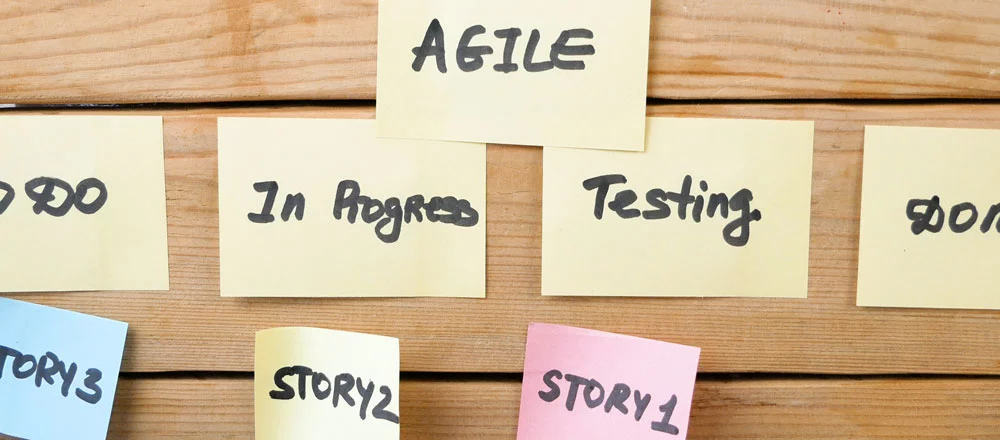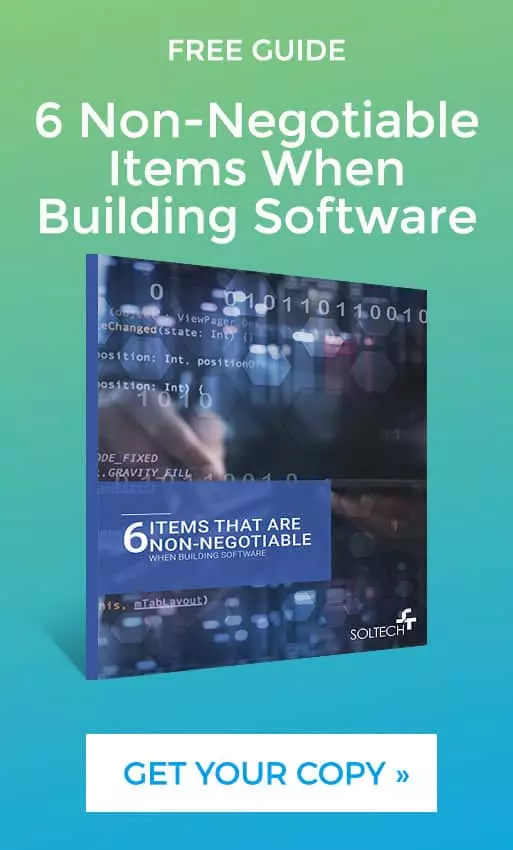
How to Put Together a Statement of Work (SOW) for Software Development
By Thayer Tate
When beginning a software development project at your organization, one of the most important steps is putting together a statement of work (SOW). There’s a widely held thought that the SOW process should be easy. If you’re a small company, perhaps this thought is true. Projects are often smaller, and framing your IT statement of work tends to be easier. As your business grows, however, its roles and projects start growing in complexity, making it easier to drop the ball when scoping, scheduling, or prioritizing projects.
Why is this?
When IT projects become larger and your project management processes grow more complex, it can be more taxing on your organization. The first steps toward effective and efficient project management start with establishing your team’s statement of work for any software development projects.

Without a thoughtful structure and process to communicate that knowledge, it’s challenging to help new hires familiarize themselves with your brand and its process. Those new hires face a long training period that’s made even longer by the need to absorb and implement all that undocumented knowledge.
How to Start the SOW Process for a Software Development Project
You’ve established the framework for a new project. How do you begin scoping it? If you ask your search engine what the SOW process looks like, you will likely receive an overwhelming amount of advice. Everyone has ideas on how to start, but when you’ve got the resources available, the goal defined, and the deadline approaching, how do you cut through the noise and set a scope for success?
If you follow an Agile model when building your statement of work for software development, you might reach for a high-level objective, sketch a budget, and see what you can get done in 90 days. However, if you think of your custom software development project as a kitchen remodel, this would be tantamount to ripping your kitchen down to the studs before you check to see if you have the money to complete the new project. For a lot of businesses, that’s a scary leap of faith.

Even in diligent organizations that have fully embraced an Agile methodology, the ability to properly follow the SOW process and set reasonable expectations is one of the most valued skills a technologist can develop. With the right statement of work for software development in place, you can properly support business and executive teams. You may find that it’s common for teams to be asked to provide a high-level budget and timeline before a project gets approved for implementation.
So, if we believe that there is value to the scoping exercise, an experienced custom software development firm or software architect can really prove their worth here. At SOLTECH, we have been scoping custom software development projects for over 20 years. Here are what we believe to be the four key steps when building your SOW process:
Step 1: Discovery
In this stage of the SOW process, you interview stakeholders, asking questions from multiple technical angles and ultimately drive toward creating an inventory of needed software features. The real trick to doing this well is to:
- Identify all end users of the software
- Develop a list of goals or use cases for each
- Translate what the user needs into functional requirements
Having a solid framework in place first will make it easier to build the later stages of your statement of work for the software project.
Step 2: Analyze, Forecast and Decide
In this stage of the SOW process, it’s all about taking the inventory of features that come out of the Discovery stage. This allows your technical team the ability to supplement those requirements with a number of technical assumptions regarding how they will ultimately develop the software. They also face a few architectural choices that need to be made to round out the description of the software. The key is not to go too deep.
In Agile terms, stick to the Epic level and don’t get bogged down at the story level. Once that is done, the team should do some estimations and forecasting (including additional design time to properly detail the design work that wasn’t done as part of this short effort). This statement of work for software development phase concludes with a review and decisions by a stakeholder as to whether and when the project will proceed forward.
Step 3: Detailed Design
When creating the statement of work for your software design project, you’ll also want to consider how the final product will be brought to life. In this phase of the SOW process, your project’s previous high-level scoping gets refined and grows as you take it through the three stages of custom software design:
- Solution: Adding detail and granularity to the requirements.
- Technology Design: Translation of requirements into a technical design.
- Visual Design: Developing what end-users will see in the solution.
Step 4: The Final Revisions
Finally, you’ll want to account for the final support touchpoints before hitting go on your completed software. Once this phase of the SOW process is complete, you should have everything you need to go to market.
In Conclusion
It’s easy to talk about dreams and goals for a software project. It’s harder to start drawing lines and assigning figures to them. That’s where creating a robust statement of work for software development comes into play.

If you want to learn more about the SOW process or discuss how SOLTECH can help bring your software ideas to life, contact our team today. You can also check out our case studies to see how we’ve helped organizations like yours thrive.
FAQs
What is an SOW in software development?
A Statement of Work (SOW) is a formal document defining a project’s scope, deliverables, timeline, and responsibilities. It aligns stakeholders by outlining expectations, reducing risks, and serving as a contract for successful software development execution.
How can I write an SOW for software development?
To write an SOW, clearly define project scope, objectives, deliverables, timelines, and responsibilities. Include technical requirements, acceptance criteria, and communication protocols. Ensure clarity, measurable outcomes, and client approval to minimize misunderstandings.
Thayer Tate
Chief Technology Officer Thayer is the Chief Technology Officer at SOLTECH, bringing over 20 years of experience in technology and consulting to his role. Throughout his career, Thayer has focused on successfully implementing and delivering projects of all sizes. He began his journey in the technology industry with renowned consulting firms like PricewaterhouseCoopers and IBM, where he gained valuable insights into handling complex challenges faced by large enterprises and developed detailed implementation methodologies.
Thayer is the Chief Technology Officer at SOLTECH, bringing over 20 years of experience in technology and consulting to his role. Throughout his career, Thayer has focused on successfully implementing and delivering projects of all sizes. He began his journey in the technology industry with renowned consulting firms like PricewaterhouseCoopers and IBM, where he gained valuable insights into handling complex challenges faced by large enterprises and developed detailed implementation methodologies.
Thayer’s expertise expanded as he obtained his Project Management Professional (PMP) certification and joined SOLTECH, an Atlanta-based technology firm specializing in custom software development, Technology Consulting and IT staffing. During his tenure at SOLTECH, Thayer honed his skills by managing the design and development of numerous projects, eventually assuming executive responsibility for leading the technical direction of SOLTECH’s software solutions.
As a thought leader and industry expert, Thayer writes articles on technology strategy and planning, software development, project implementation, and technology integration. Thayer’s aim is to empower readers with practical insights and actionable advice based on his extensive experience.






